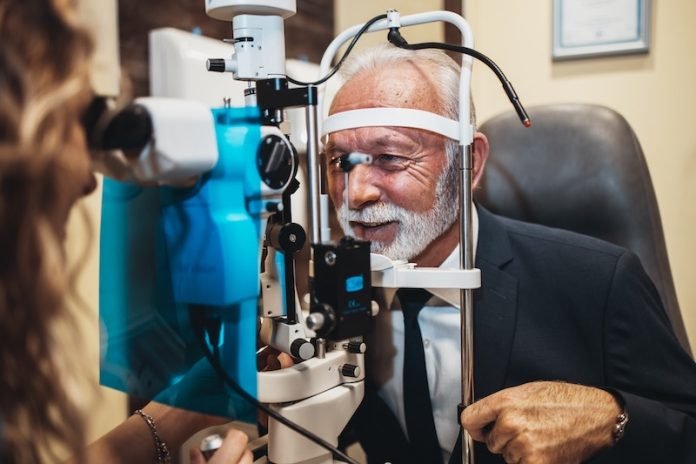
In a new study, researchers at Genentech have identified potential drug targets for age-related macular degeneration (AMD) through a study in Cell Genomics.
AMD affects about 200 million people worldwide and can lead to blindness.
Identifying Genes Targetable by Treatment
The study titled “A systems biology approach uncovers novel disease mechanisms in age-related macular degeneration” describes the researchers’ attempts to identify genes that could be targeted by treatment.
They used a molecular atlas of AMD pathology development stages and identified 23 significant genome-wide loci that were differentially methylated in AMD.
Over 1,000 differentially expressed genes were also found across disease stages and distinct Müller cell states in AMD-affected eyes.
The research highlights causal gene upregulations and underlying genetic risks for AMD.
Molecular Changes Occurring as AMD Develops
To understand the molecular changes that occur as AMD develops, the researchers generated bulk-tissue and single-cell transcriptomics and epigenomics data from 85 unique human donor eyes.
They analyzed tissue transcriptomes of early, intermediate, and two types of advanced-stage AMD.
Different Clusters of Müller Glia Cell States
One of the interesting findings of the study is the different clusters of Müller glia cell states — basal, AMD, and gliotic.
A total of 62% of the basal Müller cluster came from controls, and 80% of the AMD Müller cluster came from AMD donors.
The study authors pointed out that although Müller gliosis is a common feature in retinal diseases and injury, the AMD Müller cluster did not show higher expression of gliosis markers.
This observation in actual human disease states differs from retinal injury models often used in AMD translational research.
The research also points out that the gliotic state appears to be a crucial intermediate between normal Müller glia and the stem cell identity in retinal regeneration.
This suggests that as retinal regeneration research translates into therapeutic strategies, a deeper understanding of the disease state Müller glia is needed, as potential therapeutics designed to reprogram the basal or gliotic Müller may not be suitable for the AMD-like state.
No Genome-wide Significant Differences Found
Analysis between control and AMD donors found no genome-wide significant differences. There were no overt differences between control and AMD samples at cell type or subtype levels.
The research also found that the current study did not see a replication of the previous research findings of a shift in chromatin accessibility either globally or at specific loci.
This suggests changes in chromatin accessibility in the past bulk analysis may have been simply due to cell death in the sample with a confounding of nuclei from non-disease-related cell types.
Future Research
The researchers, along with colleagues from the University of Utah and the State University of New York at Buffalo, have identified a robust number of relevant gene mechanisms related to AMD that will likely form the basis for future research on the subject.
The study findings provide further insights into the pathology of AMD and may offer potential targets for drug development.
Further research could focus on developing therapies that reprogram the basal or gliotic Müller, potentially restoring retinal function and reducing the risk of blindness caused by AMD.
If you care about eye health, please read studies that diabetes and high blood pressure can predict blinding eye disease and 7 habits that help prevent vision loss in older people.
For more information about eye health, please see recent studies about how to protect your eyes from diabetes, and results showing that vitamin B3 may help treat common blinding eye disease.
The study was published in Cell Genomics.
Copyright © 2023 Knowridge Science Report. All rights reserved.



